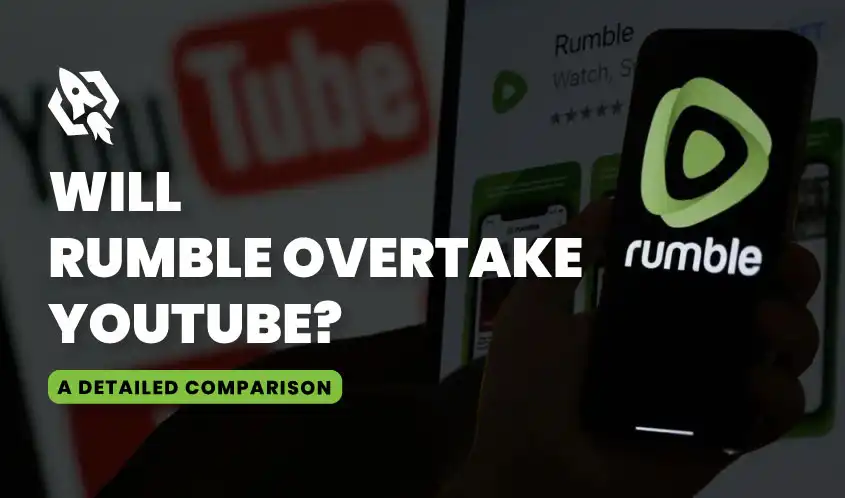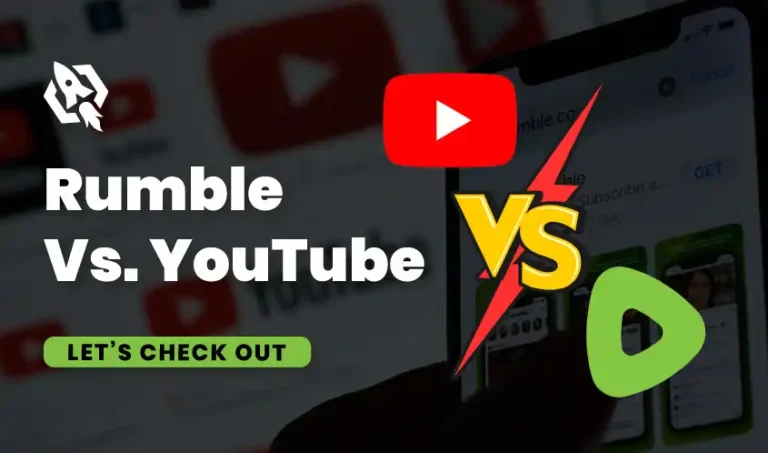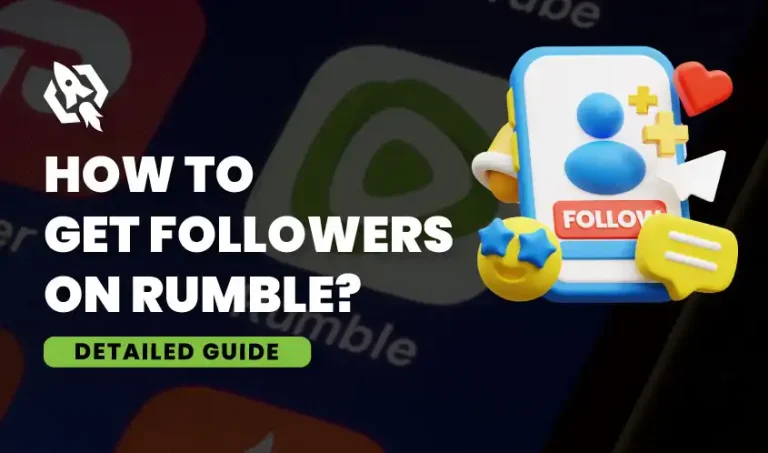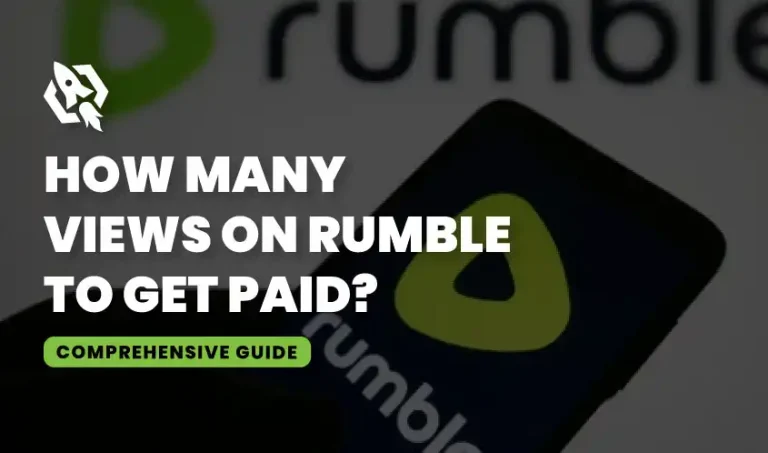The world of online video content has been dominated by YouTube for over a decade. However, a new contender, Rumble, has emerged and is making waves. With its promise of better monetization, fewer content restrictions, and a growing user base, many are wondering if Rumble could overtake YouTube. Let’s dive into a detailed comparison to understand the dynamics at play.
Rumble- a video-sharing platform that was founded in 2013. Unlike YouTube, Rumble positions itself as a haven for free speech, with fewer content restrictions and a focus on fair monetization for content creators. It has gained popularity among users who feel censored or unfairly treated by YouTube’s stringent policies.
The Main Differences Between YouTube and Rumble
Let’s investigate the main distinctions between the two platforms:
1. Speech Freedom and Content Moderation
YouTube: The platform has strict guidelines and restrictions for its community. The purpose of these guidelines is to stop the distribution of harmful content, hate speech, and false information. However, these policies have also led to the demonetization and removal of videos that some creators believe do not violate any rules.
Rumble: Rumble promotes itself as a platform with fewer content restrictions. It encourages free speech and aims to provide a space where creators can share their views without the fear of being censored or demonetized. This approach has attracted a significant number of users who feel restricted by YouTube’s policies.
2. Monetization
YouTube: YouTube’s monetization model is based on ad revenue sharing. Creators earn money through ads shown on their videos, memberships, and super chats during live streams. However, the platform has been criticized for its ad policies and the way it handles demonetization, which can sometimes be arbitrary and impact creators’ incomes significantly.
Rumble: Rumble offers a more transparent monetization model. It allows creators to earn money through ads, licensing, and a unique feature called “Rumble Battles,” where videos compete against each other for cash prizes. This model can be more lucrative for creators, especially those who have faced monetization issues on YouTube.
3. Audience and Reach
YouTube: With over 2 billion monthly active users and a massive content collection covering every imaginable subject, YouTube is a popular platform. It is deeply integrated into Google’s ecosystem, making it a go-to platform for video content.
Rumble: While Rumble’s user base is growing, it is still significantly smaller than YouTube’s. However, the platform has seen a surge in users, particularly among those who feel underserved by YouTube. This niche audience could potentially grow if Rumble continues to market itself effectively.
4. Algorithm and Content Discovery
YouTube: YouTube’s algorithm is highly sophisticated, designed to keep users engaged by recommending videos based on their viewing history and preferences. While effective, it has also been criticized for creating echo chambers and promoting sensational content.
Rumble: Rumble’s algorithm is simpler and focuses more on chronological order and popularity. This can be a double-edged sword: it avoids some of the pitfalls of YouTube’s recommendation system but may not be as effective at keeping users engaged for long periods.
5. User Experience and Interface
YouTube: YouTube offers a polished, user-friendly interface with various features like live streaming, premieres, and community posts. Its mobile app is also highly rated and widely used.
Rumble: Rumble’s interface is more straightforward and less cluttered than YouTube’s. While it may lack some of the advanced features, it provides a clean and simple user experience, which can be appealing to some users.
Chances of Rumble to Overtake YouTube
Following are the few reasons due to which Rumble can overtake YouTube:
1. Niche Appeal
Rumble’s focus on free speech and less restrictive content policies appeal to a specific audience. As societal debates around censorship and free speech continue, Rumble could capture a larger market share by positioning itself as the champion of free expression.
2. Monetization Opportunities
Creators frustrated with YouTube’s monetization policies might migrate to Rumble for better earning opportunities. If Rumble can prove to be more financially rewarding, it could attract high-quality content creators, further boosting its popularity.
3. Strategic Partnerships and Investments
Rumble has been making strategic partnerships and receiving investments that could fuel its growth. For instance, partnerships with prominent media personalities and platforms can bring in their fan bases and increase Rumble’s visibility and credibility.
4. Innovation and User Engagement
To compete with YouTube, Rumble will need to continuously innovate. This includes improving its algorithm, adding new features, and enhancing the user experience. Engaging users effectively will be crucial for sustaining long-term growth.
5. Community and Creator Support
Building a strong, supportive community and maintaining good relationships with creators can set Rumble apart. If creators feel valued and supported, they are more likely to stay loyal to the platform and encourage their followers to join.
Some Challenges Facing by Rumble to Overtake
Following are few challenges Rumble can face to overcome YouTube:
1. Difficult to Overcome YouTube’s Dominance
YouTube’s massive user base and deep integration with Google’s services make it a formidable opponent. Many users are deeply ingrained in the YouTube ecosystem, making it challenging for Rumble to lure them away.
2. Content Quality and Variety
YouTube’s extensive library of content allows users to find videos on virtually any topic. Rumble needs to ensure it has a wide range of high-quality content to keep users engaged and attract new ones.
3. Technical and Financial Resources
Maintaining and scaling a video platform requires significant technical and financial resources. Rumble will need to ensure it can handle increased traffic and provide a seamless user experience as it grows.
5. Regulatory and Legal Challenges
As Rumble grows, it will likely face increased scrutiny and regulatory challenges similar to those faced by YouTube. Navigating these effectively while maintaining its core values will be crucial.
6. Balancing Free Speech and Harmful Content
While promoting free speech, Rumble will need to find a balance to prevent the spread of harmful or illegal content. In order to preserve a good reputation and user confidence, this delicate balance is essential.
FAQs
Rumble focuses on free speech and offers better monetization options with fewer content restrictions compared to YouTube. It appeals to users and creators who feel limited by YouTube’s policies.
While Rumble has the potential to grow significantly, overtaking YouTube is a challenging task due to YouTube’s massive user base, extensive content library, and deep integration with Google services.
Rumble allows creators to earn through ads, licensing, and “Rumble Battles,” where videos compete for cash prizes. This can be more lucrative for some creators compared to YouTube’s ad revenue sharing model.
Rumble faces challenges like overcoming YouTube’s dominance, ensuring content quality and variety, securing technical and financial resources, navigating regulatory issues, and balancing free speech with preventing harmful content.
Some creators move to Rumble due to frustration with YouTube’s strict content policies and monetization issues. Rumble offers a platform with fewer restrictions and potentially better financial rewards.
Conclusion
Rumble has the potential to challenge YouTube, particularly among users and creators seeking an alternative to YouTube’s policies. However, overtaking YouTube is a monumental task that will require strategic growth, continuous innovation, and substantial resources. By focusing on its strengths and addressing its challenges, Rumble could carve out a significant niche in the video-sharing market, even if it doesn’t fully overtake YouTube.




